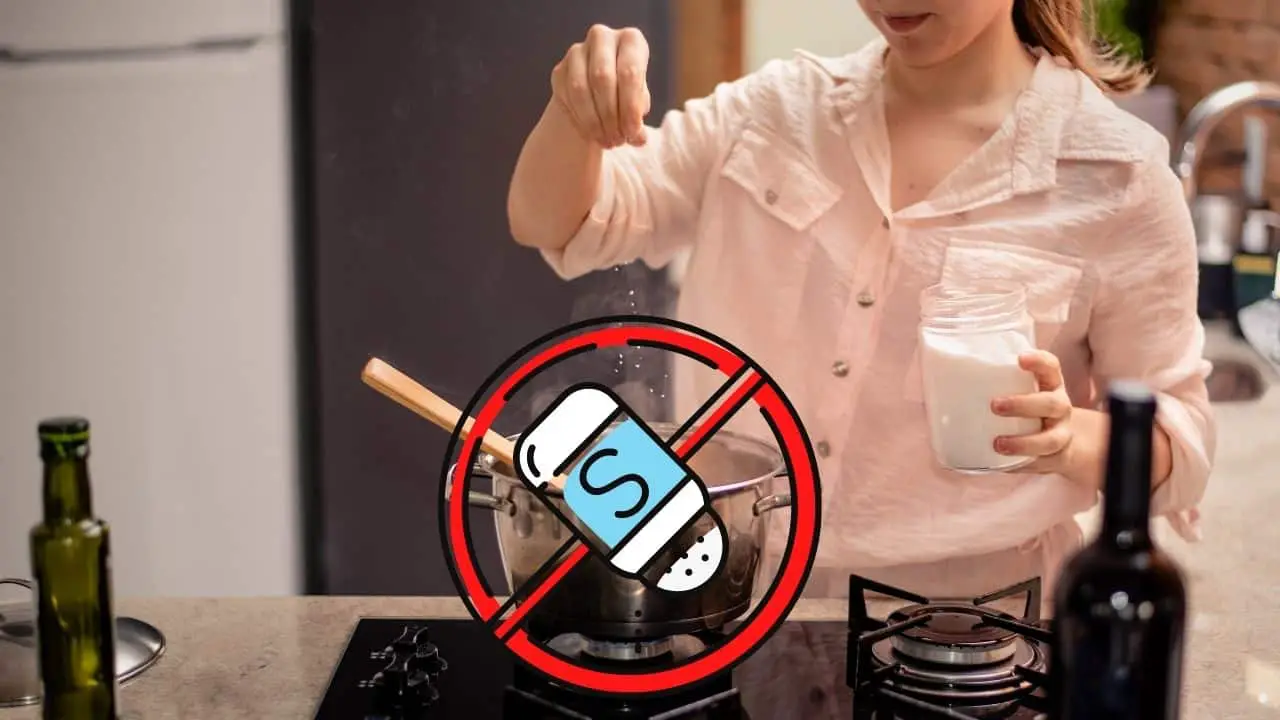Below are some tips and tricks to help you cook without salt and still add a ton of flavor to your food, whether you are doing it for health reasons or when you’ve just run out of this essential seasoning.
There’s no denying that salt is the most used food flavoring worldwide. Many people are so used to salt that they can’t imagine their food without a pinch of it.
But what if you run out of salt at the last minute or just can’t reach the grocery store? Or what if your doctor advises against using too much salt in your food?
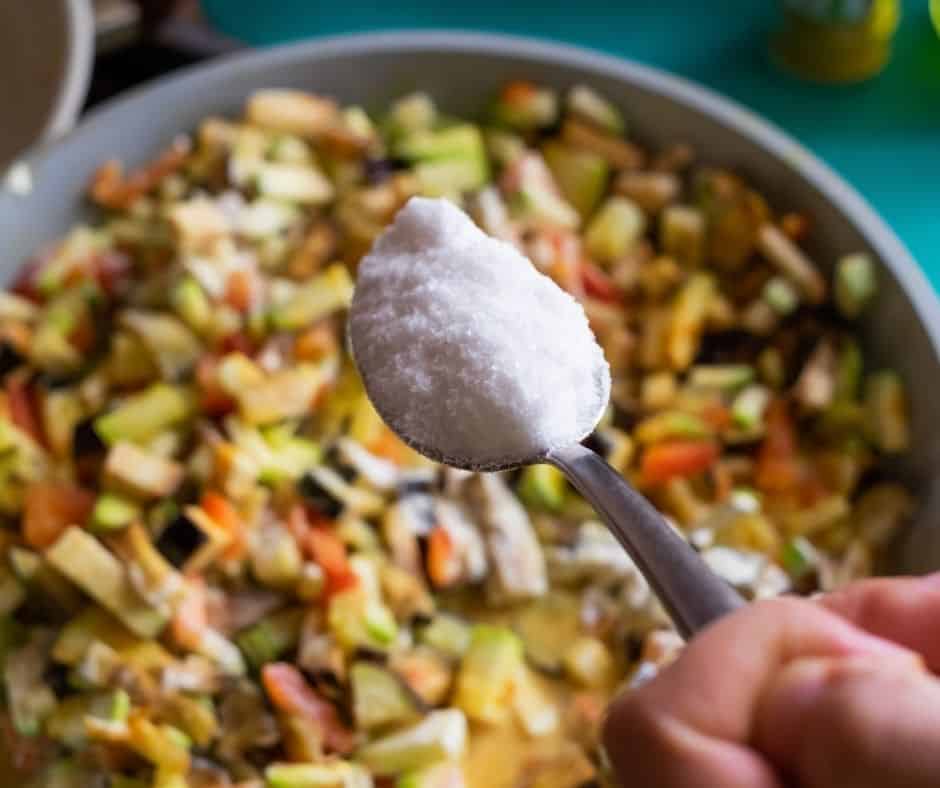
Unfortunately, salt does not have a convincing one-to-one replacement or substitute as sugar has. If we just look at it from a taste perspective, adding salt to our foods enhances and revamps the pleasing sensory properties of pretty much every dish we eat. Even for some foods that could taste a bit unpalatable; salt makes them “taste” a lot better.
So, if you are someone accustomed to eating salty food, it will take some time and dedication to start cooking and eating foods with less or no salt altogether. And I can’t blame you, when you suddenly stop adding salt to your dishes and without any additional seasoning, food will just taste bland or downright bad.
So, when you are in a pinch, and at the last minute, you realize that you have run out of salt, you don’t have to run out to the supermarket if you have any of the following items in your kitchen.
How To Make Food Taste Good Without Salt?
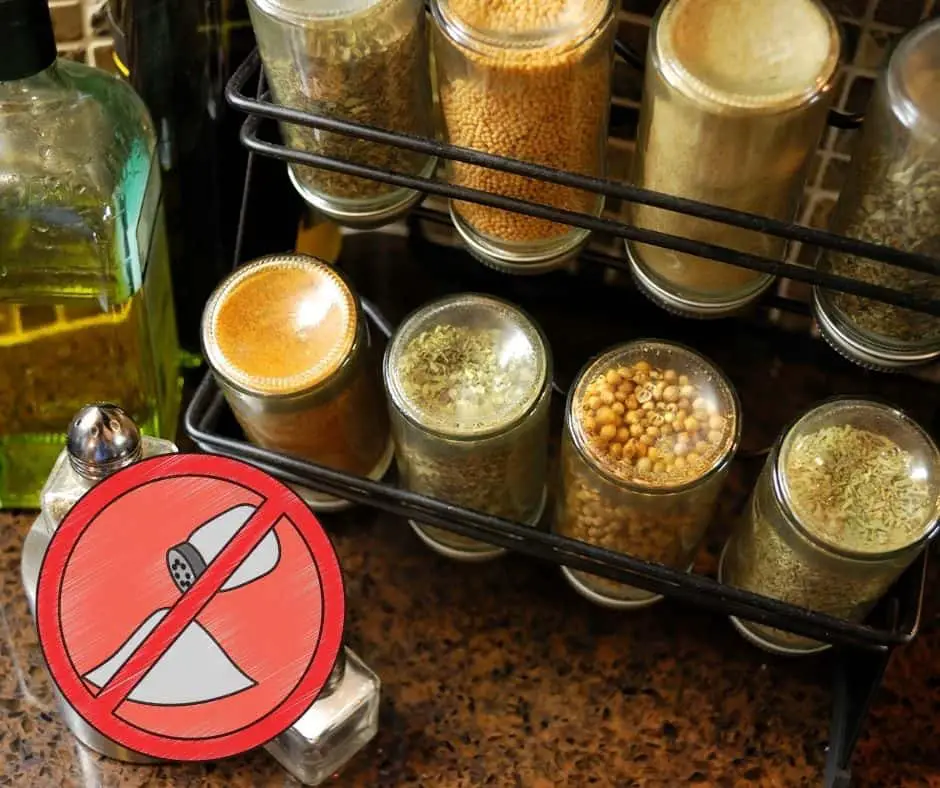
Your food still needs a little bit of saltiness to taste good, so you don’t need to forego this essential mineral altogether. These options below work well for those who just run out of salt and need a quick substitute and also for people who want to minimize sodium in their diet.
Here are common salt alternatives to try.
1. Potassium Chloride For Low Sodium Cooking
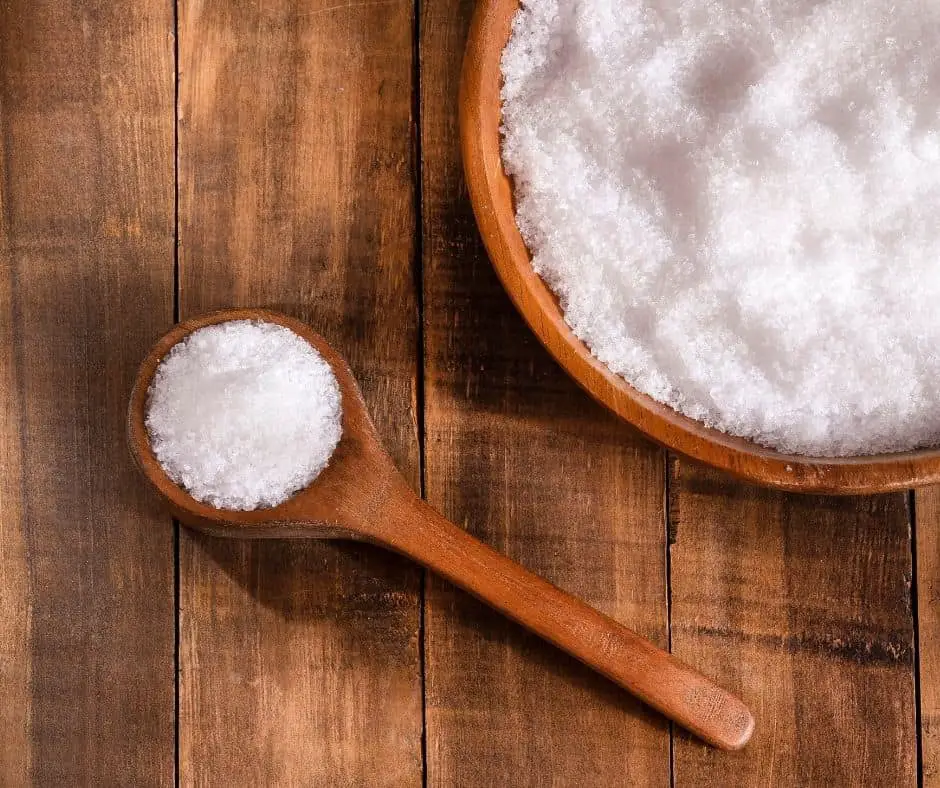
Potassium chloride is a naturally occurring mineral and the most common substitute for salt. Technically, it is sodium-free salt. The downside of using potassium chloride is the slightly metallic and bitter taste, especially if you add too much of it to your food.
When replacing salt with potassium chloride, your food still has a salty flavor, but you can probably taste the difference. To keep the same flavor in your food, start by replacing just half of a recipe’s salt with potassium chloride. You will find that much of the time, and you don’t actually need as much as you think.
Potassium chloride does not affect the texture or color of food, but it does give a natural but slightly distinctive salty-savory flavor. This makes it a perfect alternative to use if you happen to have a sodium-restricted diet or just run out of salt. [1]
Potassium chloride is also used in dietary supplements and in electrolyte powders for fasting because it does not irritate the stomach like regular table salts. It will help prevent muscle cramps and loss of water while reducing bloating.
You can buy potassium chloride at most supermarkets, drug stores, or online.
TAP ON IMAGE TO VIEW PRICE
One of the most important things to remember when using potassium chloride as a salt replacement is reducing your usage of spices and seasonings. If you don’t do this, then over time, you may find yourself increasing the amount of potassium chloride to get the same salty taste.
Read Also: If you are not ready to give up salt, just give up the bad ones. Check out what salts some of the top chefs use in their cooking.
2. Use Herbs And Spices To Replace Salt
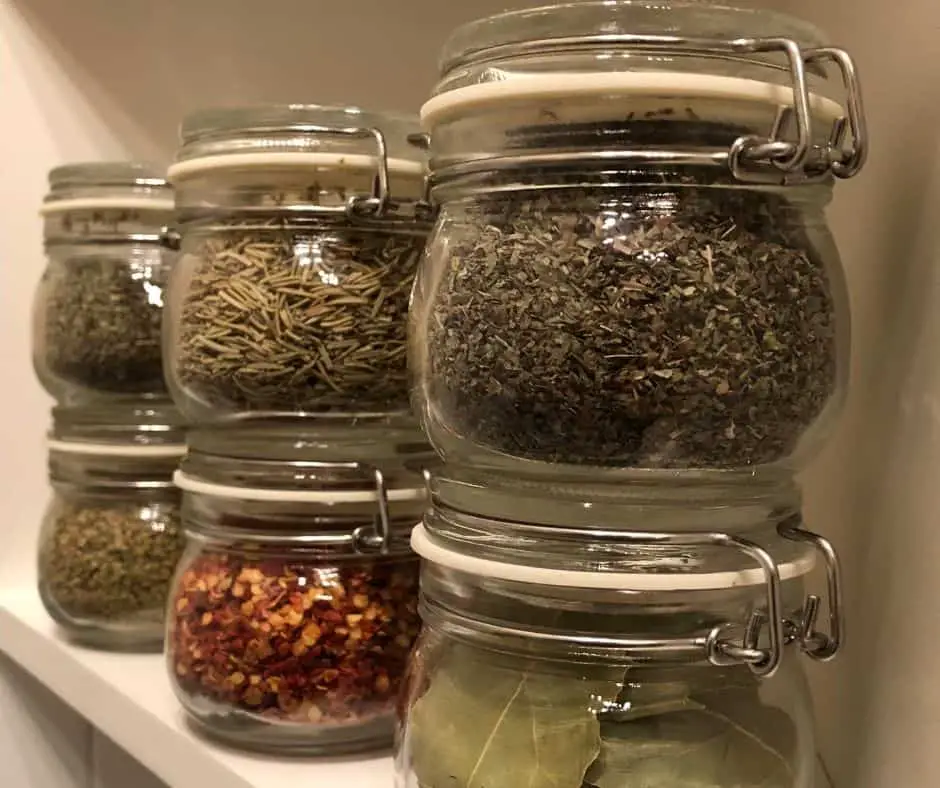
Fresh or dried herbs are another common way people cook their meals without using salt. Just check your spice rack; you may find many herbs and spices seasoning to experiment with, some of which may already contain some salt.
Oregano, Basil, Sage, Thyme, and Dill are a few tried and tested herbs that are often used as a simple salt substitute. Herbs that are the most flavourful are most likely to give you the best result.
You can also use black pepper, turmeric, cumin, garlic powder, cayenne, onion powder, or even coriander to add flavor without using salt.
Let’s take a closer look at these herbs and see what they taste like and which dishes will work best with them.
Oregano
Oregano has a peppery-warm, strong, aromatic, slightly bitter taste, and a very potent aroma. You can use whole or chopped-up fresh oregano leaves in foods like meat marinades, rub it on seafood and poultry before grilling, and even in baking, salads, egg dishes, and casseroles.
Basil
Basil has a good balance between sweet, savory, and peppery. Dried basil is good, but a fresh one has aroma and flavor.
Basil is good for salad dressings, marinades, pesto, warm or cold sauces, soups, or even pizza and sandwiches. Basil is often used in Mediterranean, South Asian, and Thai dishes.
Sage
Sage is often used in Italian, British, and French cooking, and it can be used as a salt replacement for various types of dishes.
Sage has a pungent aroma, and it has a slightly minty and musky taste. You can use sage to substitute salt in stuffing, and sausages, and it works well for fatty meats such as goose, pork, and fatty cuts of beef. Sagae is also great when chopped and mixed into dumplings and pasta.
You only need to use a little bit of it to get a pleasant taste. And it does not lose its flavor even when cooked for a long time.
Thyme
Thyme is an excellent salt alternative because it comes in two flavor varieties, regular thyme, and lemon thyme. Lemon thyme has a distinct lemon aroma and flavor, whereas ordinary or common thyme has a mintier, slightly peppery, and even sweet flavor with a slightly salty undertone.
What is also great about thyme is that it goes well together with oregano, parsley, and rosemary.
You can use thyme for roasted, baked, or braised meat dishes that call for chicken, beef, pork, or even lamb. It also works well for marinades in stuffing, or you can use it as a dry rub. In addition to seasoning meats, thyme also works well with seafood, soups, roasted vegetables, or even cheese omelets.
As you can see, this herb is very versatile when it comes to seasoning your dishes. That includes the Mediterranean, European, British, Latin, African, and many Central American foods and dishes.
Just keep in mind, the more you cook it, the more flavor you get out of it.
Dill
Dill has a slightly grassy flavor with slight citrusy notes, and it is often used as a substitute for parsley, but many have also found dill to be quite an effective salt substitute, especially when paired with garlic.
Because dill has quite a unique taste, use it sparingly, just a tiny amount can go a long way. Yes, it won’t completely make you notice the absence of salt, but it certainly helps.
Dill is great to use as garnish and works exceptionally well with potato dishes and on fish, especially salmon. You can use it successfully in soups, stews, and salad dressings, or just add it to cooking water from dumplings to potatoes. And yes, if you are frying eggs and run out of salt, dill can certainly help.
Read Also: A Staggering Amount Of Food An Average Person Eats In ONE Year. (It Is a Lot!)
3. Ginger – An Easy Salt Alternative
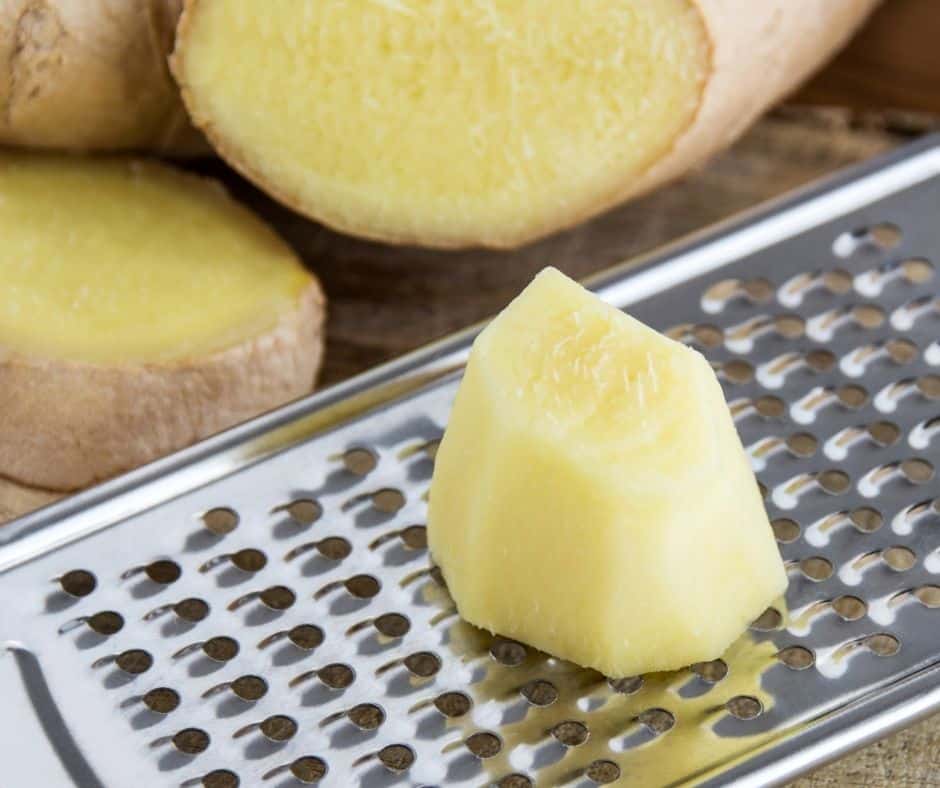
Ginger is also a common ingredient used as a salt substitute. With its spicy, peppery-sweet bite, ginger can swap salt in a lot of dishes.
You can mix grated or chopped ginger root or even dried ginger powder into marinades, stir-fries, sauces, stews, curries, and healthy homemade soups. It can also be sprinkled over meat before cooing or used in salad dressings.
Ginger’s taste is very adjustable, and the sweet and hot flavor can change based on what other ingredients you are cooking with it.
Ginger also has many health benefits, like relieving indigestion, nausea, and diarrhea. It also aids with detox and weight loss by suppressing your appetite. [2]
4. Use Lemons Instead Of Salt
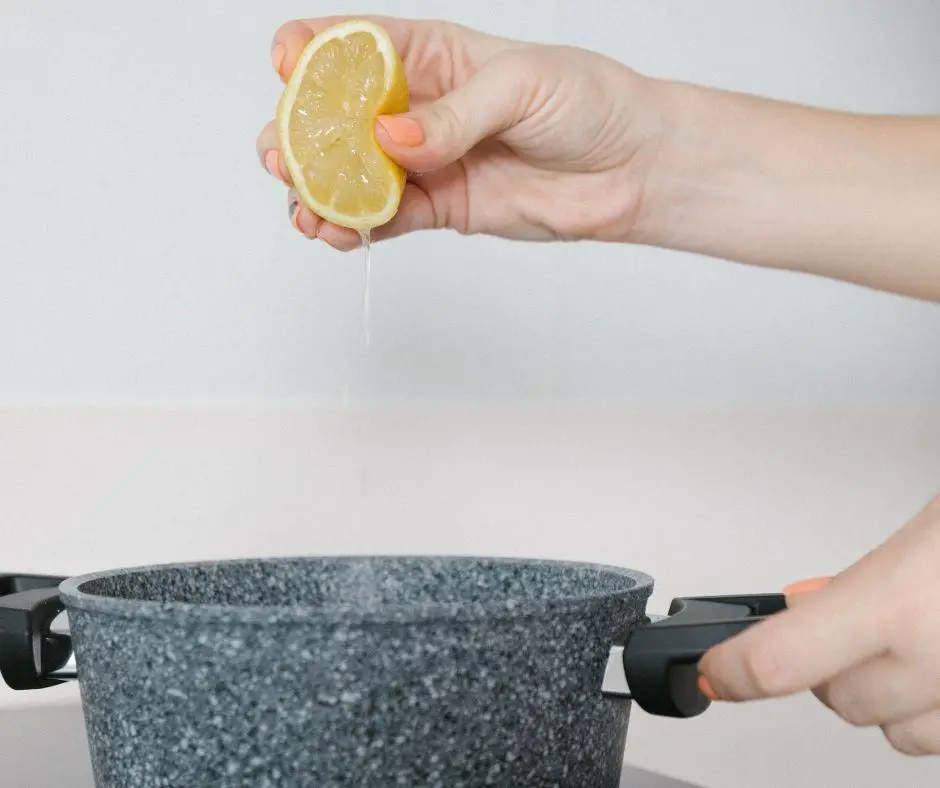
Lemon juice and lemon zest are often used as a flavor enhancer and alternative to salt in many recipes. Because of the acidity in lemon juice, it works similarly to salt by helping to bring out the flavors of the ingredients in the dish.
Depending on the type of dish you are cooking, replacing salt with lemon juice and zest would allow for a 30-75% reduction in sodium per recipe!
fruitsandveggies.org
So, wake up the flavors in your food without using salt and add lemon juice to protein-rich foods like meat and fish. Lemon juice also works great on vegetables, salad dressings, marinades, and even on your popcorn!
You’ll get the most benefit from lemon juice if you use fresh lemons, which are high in vitamin C, but concentrated, bottled lemon juice also works great.
5. Get A Sharper Taste With A White Pepper
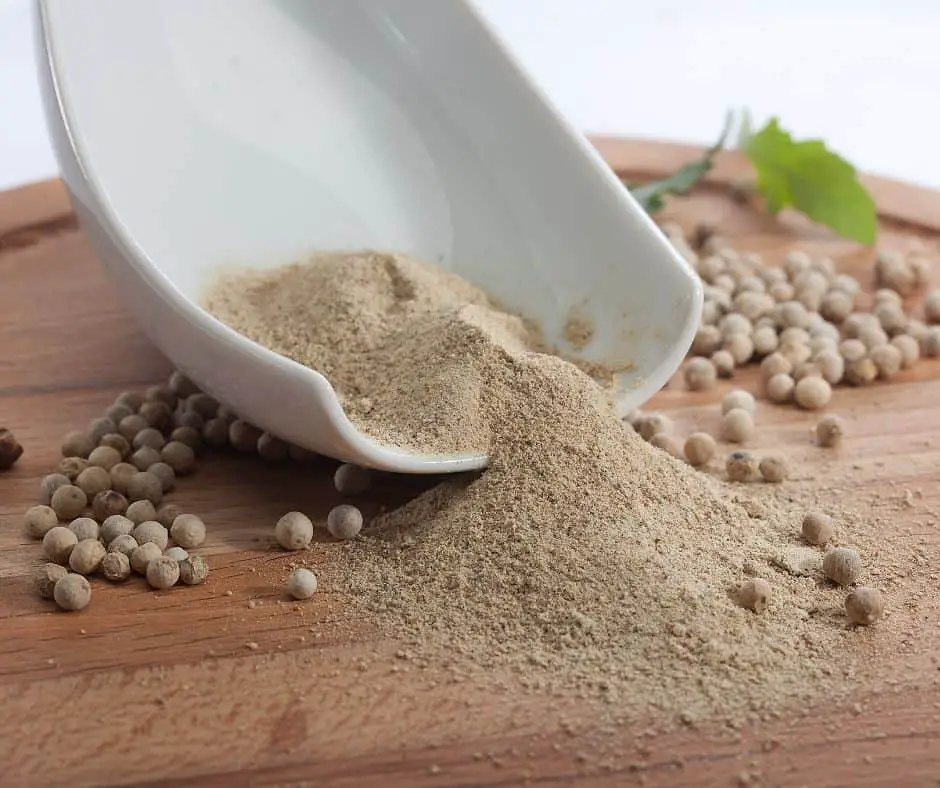
White pepper is another common salt substitute that you should certainly try out. It has a milder, more complex flavor than black pepper, so it is a great option if you want to flavor your food without the heat or color of black pepper.
White pepper works well in chowders or creamy soups, Chinese soups, stir-fries, cauliflower fried rice, and marinades. If you don’t have any salt, white pepper would also work quite well on meat, poultry, and potato dishes.
6. Garlic – Great For Slat-Free Cooking
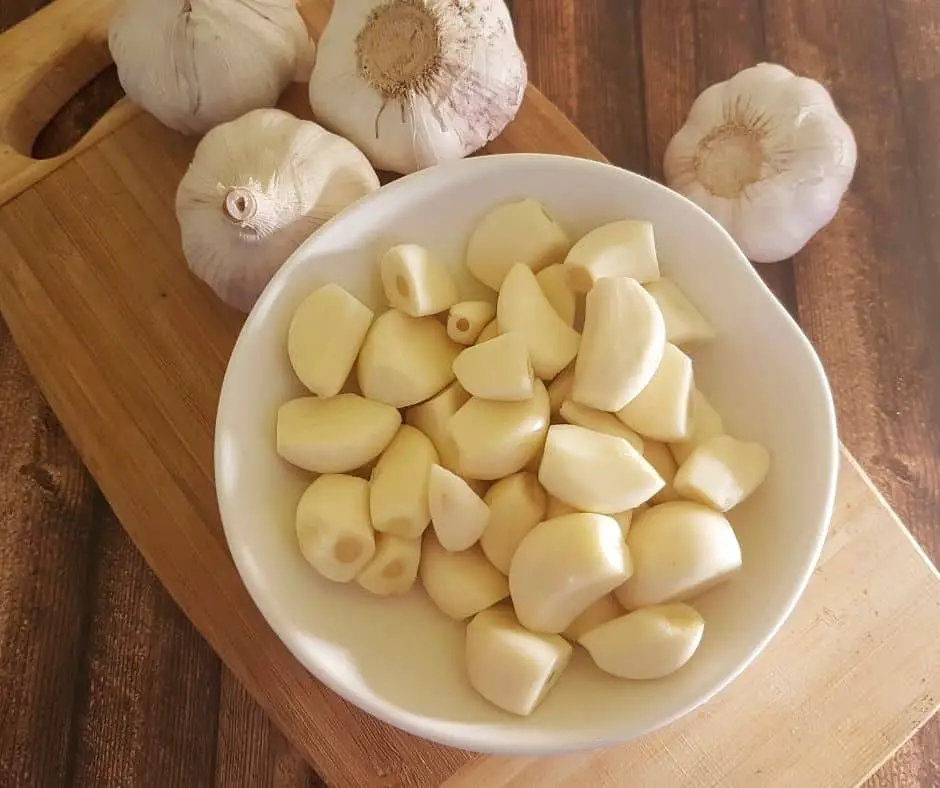
Garlic has endless culinary uses, including being a useful substitute for salt. Garlic is rich in flavor and contains many valuable nutrients such as vitamin C, zinc, calcium, and iron.
Raw garlic adds an aromatic, spicy, and zesty taste to your foods and dishes, while roasted garlic gives your food a sweet and slightly nutty flavor.
You can use garlic as a slat substitute when cooking chicken, fish, meat, mushrooms, and vegetables.
In addition to adding garlic straight to your food, you can also mix it with olive oil and use it as a rub on meat or fish before grilling.
You can also use garlic flakes or powder if you don’t want to spend time roasting or cutting it.
Balck garlic is also something you can try; its sweet and earthy flavor can certainly give your food a taste boost if you are not using any salt.
Read more about black garlic and how to make it.
7. Spice And Herb Mixes – Flavor-Rich Ways To Cut Sodium

If salt is off the menu, then spice mixes are an excellent solution to adding some flavor to your food. You can experiment with different herbs and spices, mix and match them, and see which ones work the best for your dish.
If your aim is to cook completely salt-free, make sure that your store-bought herb and spice mix doesn’t contain any added salt.
If you want to make your own herb and spice mix that you can use instead of salt, then here is one good combination to try out:
Ingredients
- 1 Tbsp cayenne of ground pepper
- 1 Tbsp onion powder
- 1 tsp oregano (dried)
- 1 Tbsp garlic powder
- 1 tsp dried thyme
- 1 tsp dried basil
- 1 tsp dried parsley flakes
- 1 tsp ground black pepper
- 1 tsp ground white pepper
- 1 tsp ground mace
- 1 tsp sage (dried)
- 1 tsp of the ground, grated, dried, zest of lemon peel
Store it in an airtight glass container in a dark and cool place for up to 5 months. Use can use this mix on all types of savory dishes.
8. Reduce The Need For Salt With Cumin
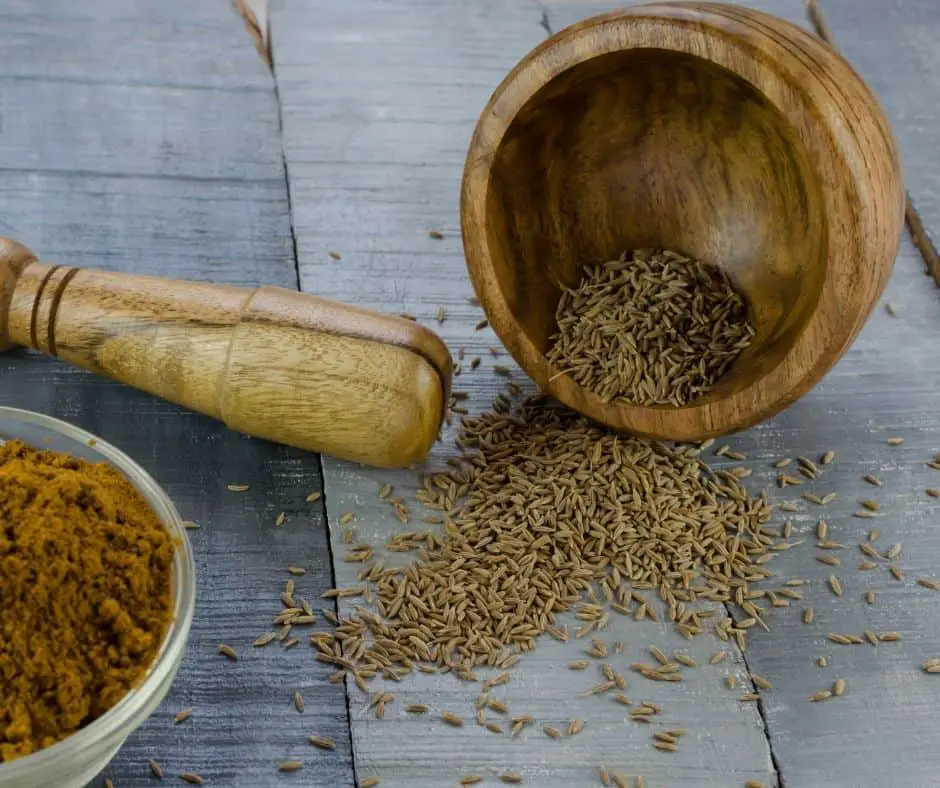
Not all herbs and spices would do the trick when it comes to replacing salt in your cooking. You will need those that are most flavorful or have flavor-enhancing properties.
Cumin is one of these spices that add depth to any dish and it works quite effectively as a substitute for salt.
You can sprinkle it on rice, meat dishes, and even salads to give them a little bit of extra flavor. The cumin seed adds some warm, distant, and smoky flavor to your food.
9. Use Cinnamon For Savory Dishes
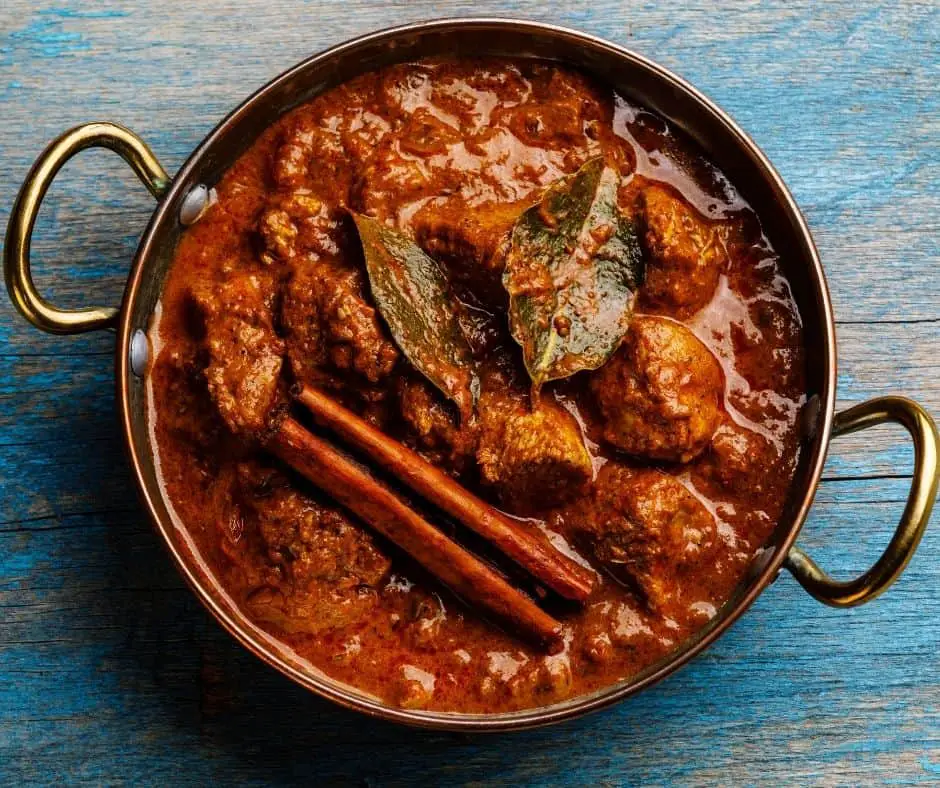
Not only great for sweet cinnamon rolls, but cinnamon can also replace salt in many savory dishes.
This strong, warm spice has slightly peppery and sweet undertones, but it is not sweet nor is it a sweetener; cinnamon rather helps bring out other flavors in your dish.
If you want to make a dish appear a little salty, add cinnamon to soups, curries, chilis, roasts, bolognese sauce, and marinades for pork, turkey, or chicken. You could also swap salt for cinnamon when cooking lentils or beans.
Just don’t add too much. A small dash of cinnamon adds the perfect amount of sweetness with just a hint of saltiness that will keep your taste buds guessing and your brain thinking that food tastes salty.
Cinnamon is also good for you and contains antioxidants, iron, calcium, manganese, fiber, and other health benefits.
Here are more clever ways how you can add cinnamon to your diet and cooking.
10. Apple Cider Vinegar – Versatile Salt Replacement
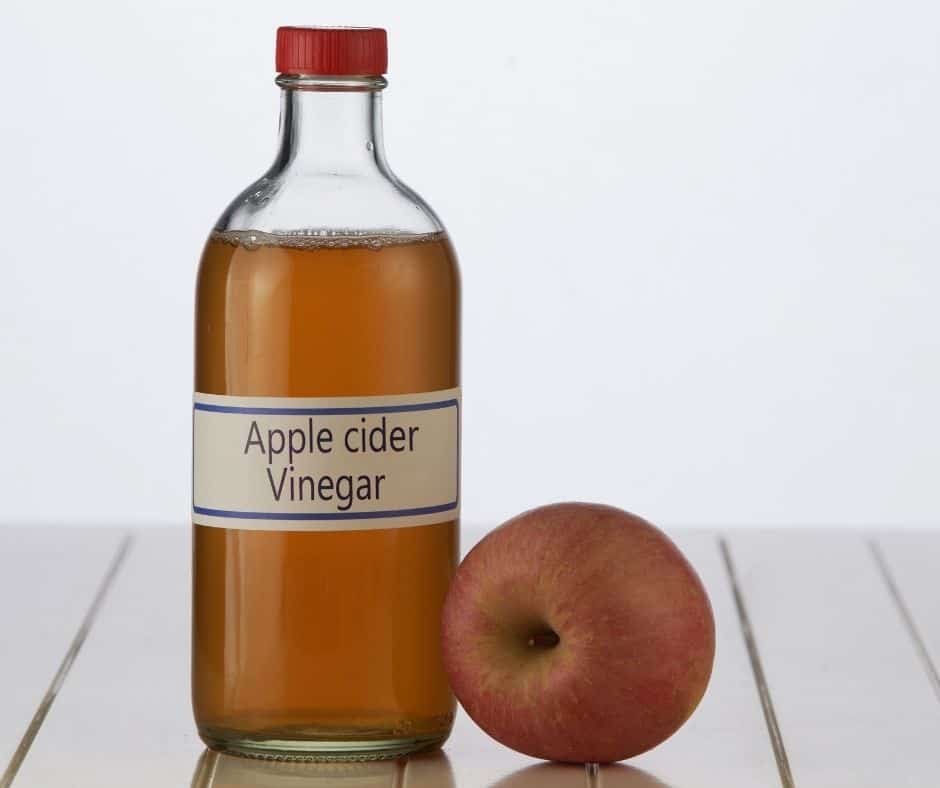
You can reduce the amount of salt in your meals by using apple cider vinegar. This vinegar has a sharp and sour taste, but you may get used to it over time.
It is flavorful, low-sodium, and calorie-free, and is claimed to have many benefits, so it really is a versatile and healthy salt replacement.
Apple cider vinegar’s dry, sharp flavor is what makes it an ideal salt substitute for marinades, salad dressings, and also for pickling. You can also use it successfully with pork, beef, and vegetable dishes.
Read Also: Apple Cider Vinegar Benefits And Uses.
11. Turmeric – A Perfect Mix Of Savory And Spice
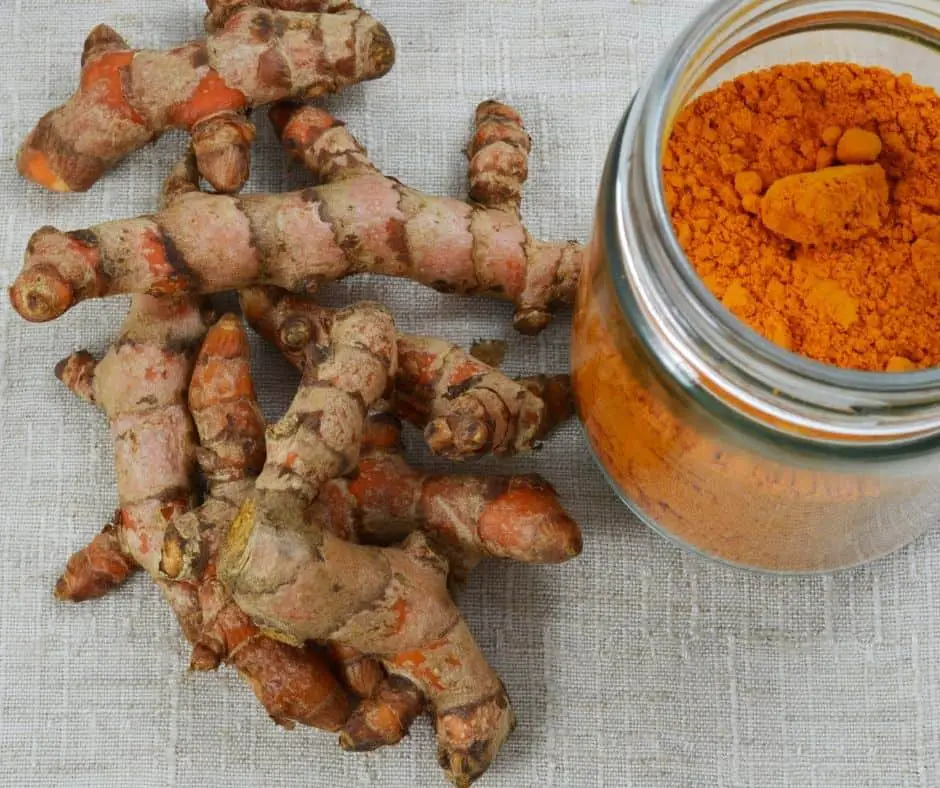
When it comes to alternatives to sodium, turmeric is perhaps my favorite spice for the job.
Turmeric has an overpowering earthy, even slightly bitter, and musky taste with a hint of peppery spice. Turmeric gives your dishes a golden yellow-orange color, and just a pinch of it packs a big nutritional and flavor punch.
I recommend combining turmeric with black pepper to add more flavor without noticing the absence of salt in your food. Still, black pepper also helps with the bioavailability of curcumin, which is the main active ingredient in turmeric root.
Read More Here: Why Turmeric And Black Pepper Are Such A Powerful Combination!
Cooking with turmeric is not just limited to curries; you can also successfully replace the salt with turmeric in many other recipes. Using fresh turmeric or turmeric powder, add it to your scrambled eggs, vegan egg salad, roasted vegetables, rice, bulgur, quinoa, couscous, and even cauliflower rice.
Just be careful when cooking with turmeric; your fingers, dishes, and countertop may end up matching your recipe: golden-yellow. Whether you use dried, ground, or fresh turmeric, it will stain the things it touches if you are not careful.
12. Onions – Add Pungent Flavor To A Wide Variety Of Recipes

Onions, whether cooked or raw, they complement almost any savory dish. Onions are rich in an aroma that you’ll appreciate if you don’t want salt in your food.
I recommend caramelizing onions for a deeper flavor in soups, stews, roasted or braised dishes, tomato-based sauces for pasta, and meats, burgers, pizza, and meatloaf.
The flavor of caramelized onions can help you replace the salt in vegan and vegetarian dishes as well.
Dried onions, which contain no salt, are also a great salt alternative for low-sodium cooking. Dried onion and onion powder are intensely flavorful and will save you from crying because you don’t have to peel, chop, and sautée the onions.
Add it to mashed potatoes, soups, chicken, marinades, and egg salad.
13. Use Nutritional Yeast In Place Of Salt
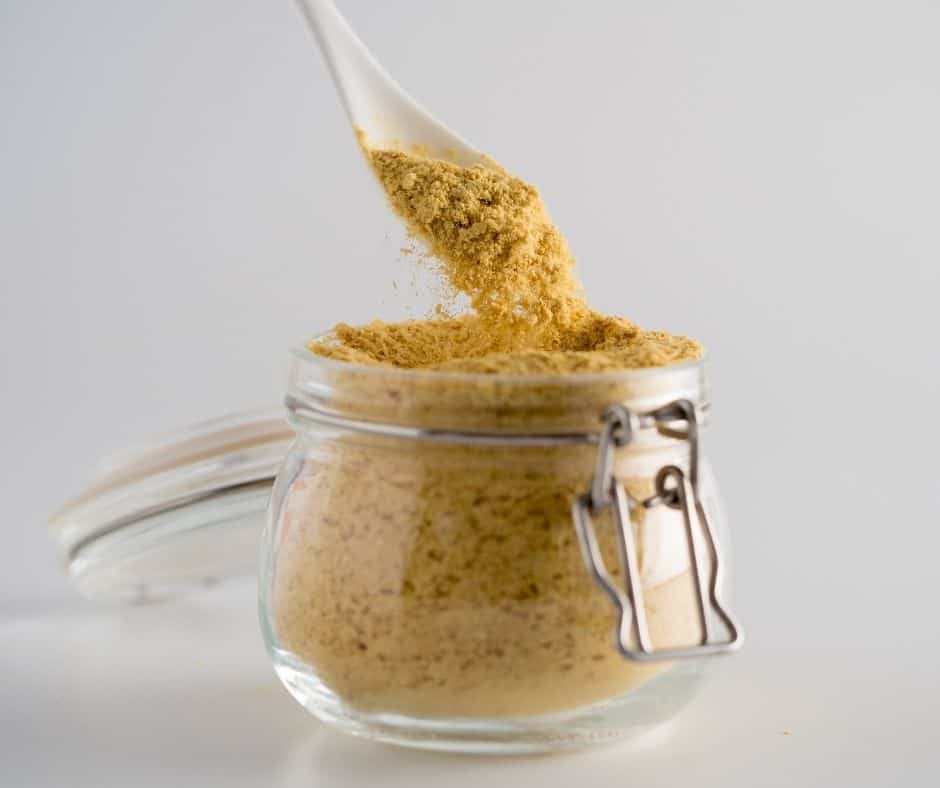
Nutritional yeast is not only a nutritious plant-based cheese substitute, but it is also a great and easy way to flavor your dishes without increasing your sodium intake.
Nutritional yeast has a uniquely rich, savory, nutty, salty, “cheesy” flavor, making it an excellent alternative to salt.
Add nutritional yeast to your creamy sauces, stirred into soups for umami flavor, sprinkled over popcorn, sprinkled on roasted broccoli, potatoes, or squash, added to rice or quinoa, or even sprinkled on your toast.
When it comes to nutritional yeast, you don’t need to use much, typically 1 or 2 tablespoons will be quite enough. Keep in mind that it also works as a thickener for soups and sauces.
14. Savor The Flavor With Paprika
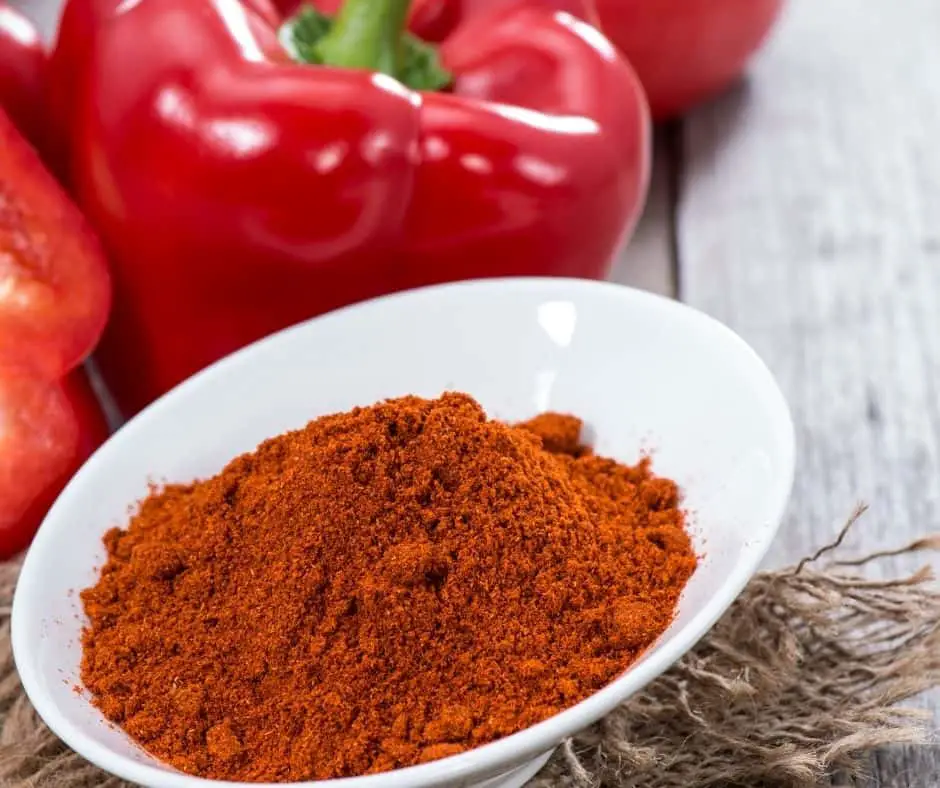
Cayenne pepper can quite well work as a replacement for salt, but it is undoubtedly not for the faint-hearted. Therefore I recommend paprika instead, which has a sweeter, milder peppery taste than cayenne pepper.
You can use powdered paprika seasoning made from dried and ground hot and sweet peppers. Just check the label, as some of the ready-made herbs and spice mixes can have added salt in them.
Paprika is also great because it works well with cinnamon, cumin, garlic, sage, thyme, coriander, and dill.
So, savor the flavor with paprika and add it to chicken, lamb, fish dishes, scrambled eggs, baked sweet potatoes, soups, stews, and so on.
When adding paprika to your food, do it near the end of the cooking process; unlike thyme, the color and flavor of paprika will diminish the more it is cooked.
Useful Tips And Tricks For Cooking Without Salt
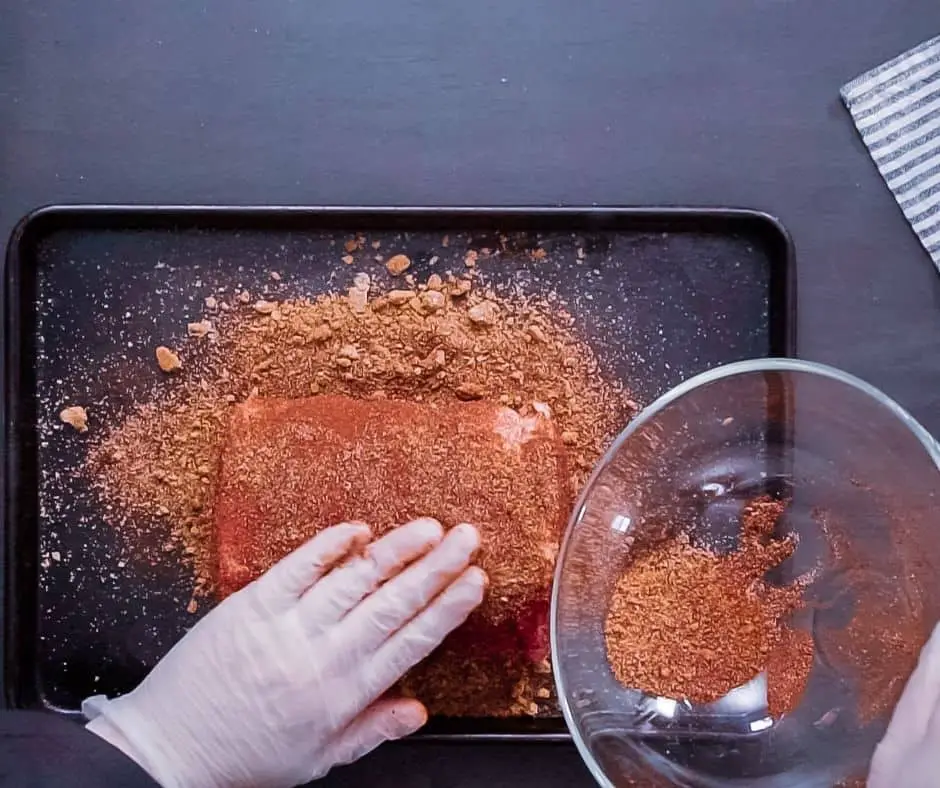
1. Grill Your Meals
Grilling your meat or vegetables adds a smoky taste to your food; hence, you’ll see no need to add salt. You can use clever alternative methods for salt to give your grilled recipe a bit of extra flavor. Use cedarwood plank or alder or oak wood chips for your grill.
Also, use a cast-iron skillet since it retains the heat well and ensures that nothing burns before cooking thoroughly inside. Give this a try and see the difference in taste. It’s quite delectable.
2. Cook On High Heat
Similar to grilling meat without added salt, to get the most flavor out of your veggies, be sure you cook it with high heat. Make sure you stir them regularly to prevent burning and sticking.
3. Make Your Own Seasonings
You can control the sodium content of your food by making recipes using dry ingredients from scratch. Spices like cardamom, cinnamon, nutmeg, and red pepper can take you a long way when it comes to producing a tasty meal without salt.
Check my salt-replacing spice mix recipe above for ideas and inspiration.
4. Use Herbs And Spices
Yes, I already covered it above, but herbs and spices and probably the most effective and flavorful option when cutting down on sodium in your cooking.
You can never go wrong with herbs and spices if you want to reduce your salt intake. Herbs and spices have a lot of flavor to them, which can really help enhance your meal.
Herbs and spices bring out the natural flavor of your meals in a simple, natural way. To get the most out of your fresh herbs, use these super fast and easy drying methods to make them last for months.
Also, consider cooking whole spices like cloves and cinnamon sticks to bring out their unique flavors.
5. Don’t Overdo It
A little bit of seasoning goes a long way, but too much will ruin the flavor of your food. When cooking without salt, our taste buds could play a trick on us, and to get that familiar salty flavor, you might overcompensate with other seasoning and end up with an over-seasoned dish. Instead of adding more, try to toast your spices and herbs to bring out their natural flavors.
Also, remember that hot foods require a bit less seasoning than cold food.
Foods That Are High In Sodium – Avoid!
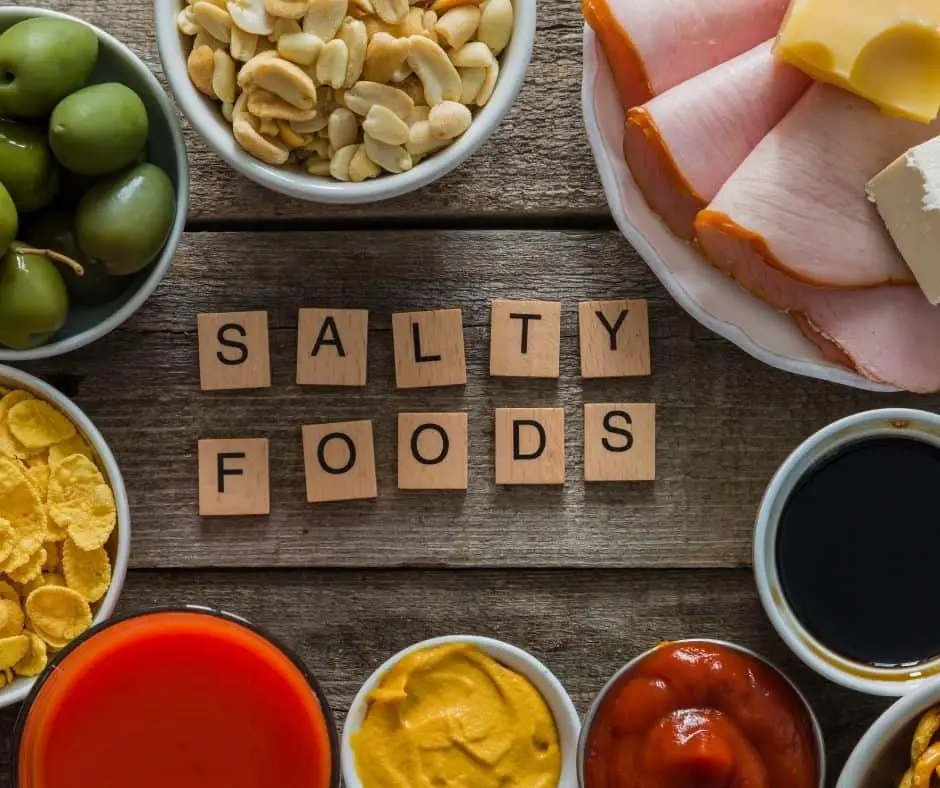
Even if you really try cooking with salt, there could be instances where you may find yourself using salt without even knowing. To minimize or eliminate salt in your diet, you need to pay close attention to the ingredients on your food labels and avoid certain foods altogether.
Don’t Use Ready-Made Sauces
Even though it’s fast, easy, and tasty to include ready-made creamy sauces or rich gravies in a recipe, you shouldn’t do so if you’re striving to cut down on salt. Store-bought curry and pasta sauces are often packed with sodium.
Avoid Processed Foods
Processed foods can account for up to 75% of salt in your diet. It’s best to avoid processed foods and stick to the whole, natural form of the food instead.
Some processed foods that may contain large amounts of hidden sodium include:
- Canned foods
- Processed meals and cheese
- Cheese spreads and sauces
- Salty snacks, chips, pretzels, popcorn, etc.
- Canned beans and vegetables
- Processed deli meats like hot dogs, bacon, bologna, etc.
- Fast food items (chicken nuggets, burgers with condiments)
- Salted peanuts or almonds
- Bouillon and stock cubes
- Etc.
Be Careful With Bread And Baked Goods
Be careful with your bread, rolls, muffins, pretzels, and other baked goods, as these may often contain sneaky sodium sources. Although you may not be able to taste it, some of them could contain high levels of sodium.
Reduce your sodium intake by avoiding the following:
- Commercial loaf of bread and bread rolls (frozen or from bakeries).
- Pretzels and crackers have a lot of salt in them.
- Fast food items like sandwiches, toast, bagels, etc.
- And surprise surprise, The Sweet Hawaiian bread has over 400mg of sodium per serving.
More Surprising Foods That May Contain A Lot Of Salt
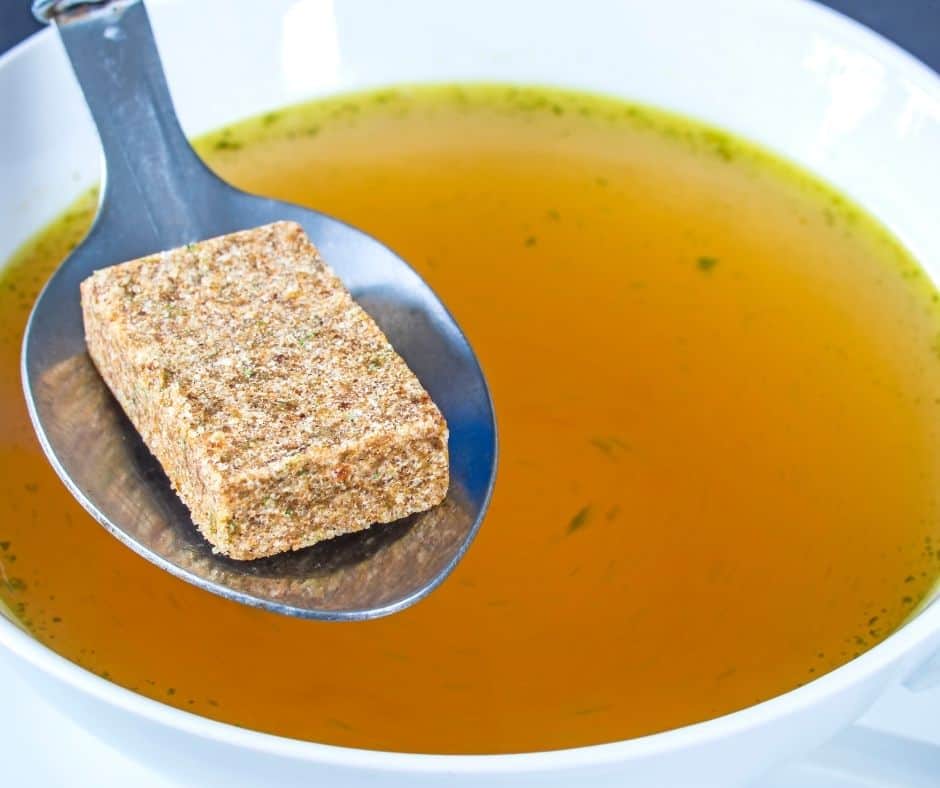
Here are more foods that often tend to be high in sodium. It’s best to avoid the following if you aim to cut down on sodium consumption.
- Canned soup
- Miso Paste
- Instant meals like Ramen noodles, instant rice, ready-to-eat cereals
- Processed dips and sauces (tartar sauce, barbeque sauce)
- Smoked, salted, cured meats like ham, bacon, deli meats, and beef jerky
- Store-bought vegetable juice
- Many canned beans and vegetables
- Soy sauce and some bottles of ketchup
- Pickles
- Dry salted fish
- Canned foods, like spam, chili, ravioli, and corned beef
- Sauerkraut and sauerkraut juice, although very healthy, can have over 600mg of sodium per 100g
Always read labels to make sure that you choose low-salt foods and products.
Replace The Above With These Foods With Low Sodium:
- Fresh, dried, or frozen, fruits like apples, berries, bananas, oranges, peaches, avocados, etc.
- Dried legumes like beans and peas.
- Unprocessed grains like quinoa, brown rice, and many other nutritious grains.
- Starchy vegetables like sweet potatoes, regular potatoes, parsnips, and butternut squash.
- Fresh or frozen poultry, meat, and fish like turkey, chicken, pork, beef, salmon, cod, and halibut.
- Cooking oils like olive oil, peanut oil, rice bran oil, soybean oil, sunflower, and coconut oil.
You can never go wrong with fresh produce and homemade products if you want to control your salt intake.
How Much Salt Per Day Is OK?
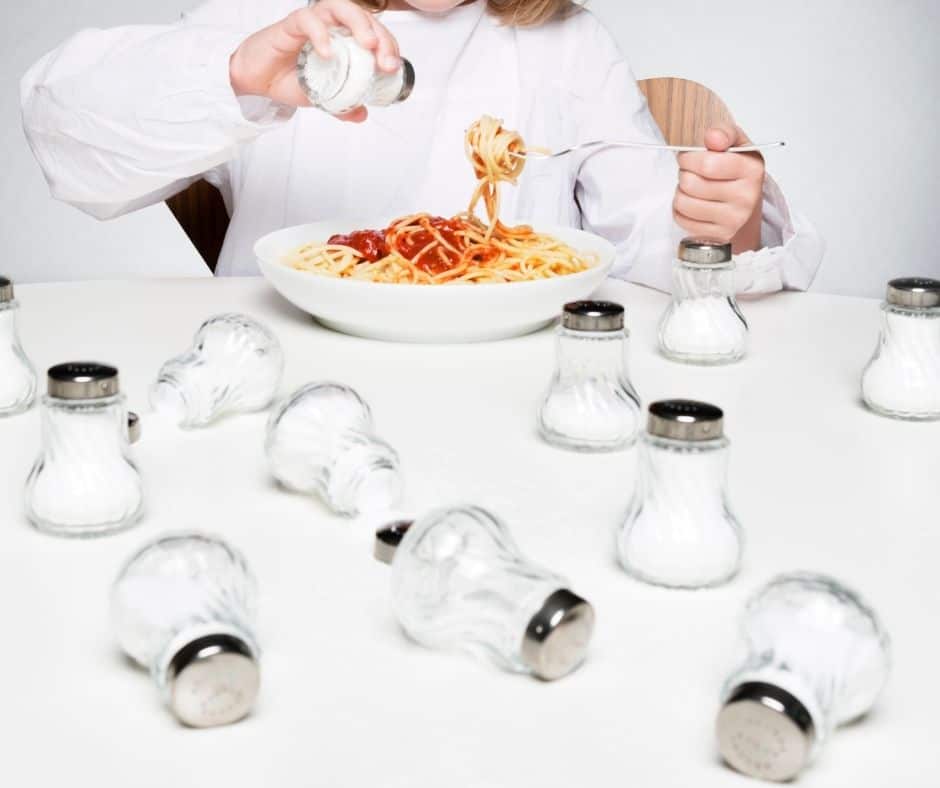
Limiting sodium is not the same as eliminating it altogether. Remember, sodium still has its health benefits, and completely cutting it out of your diet without any valid reason is not good for you either.
When it comes to eating salt, then moderation is the key.
Here is an approximate guide to follow:
Adults should keep their daily salt intake below 6g (2.4g sodium or about one teaspoon). Children aged five and below should keep their daily salt intake no more than 2g (0.8g sodium). [3]
Tips To Limit Your Sodium Intake:
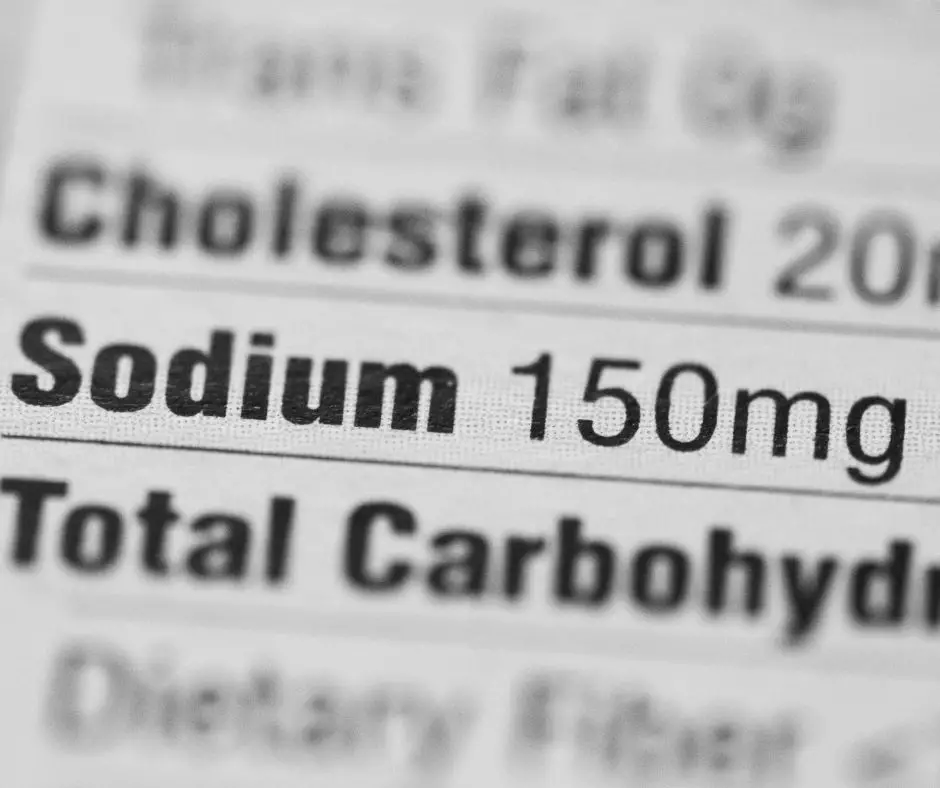
- Check food nutrition labels to see the milligrams of sodium per serving.
- Check for the other sodium-containing ingredients on the nutrition label like sodium citrate, sodium nitrate, sodium benzoate, and monosodium glutamate (MSG).
- When grocery shopping, choose the low-sodium options mentioned above.
- Look for products that say low-salt, reduced-salt, or without added salt on their packaging or have 5% or less of the daily value of sodium.
- Replace salt with herbs and spices mentions above in your recipes.
- Check labels carefully, and don’t forget about hidden salt in items like bread.
- Request the cooks at the restaurant you’re dining at to prepare a low-salt or salt-free meal for you.
- Avoid fast food.
Read Also: How To Make Sauerkraut Without Salt – (Easy Recipe In The Jar).
Conclusion
Salt is a necessary element in our diet, but too much of it can be dangerous to your health. We have become so accustomed to recipes containing salt that we don’t even think about the amount of sodium contained in them.
You need NOT completely eliminate salt from your diet – you only need to cut down on the levels or choose low-sodium alternatives.
You can also reduce your intake of salt by cooking at home more often. This way, you have control over the amount of sodium your food contains.
Read Also: 5 Creative Ways to Fix Salty Mashed Potatoes!
